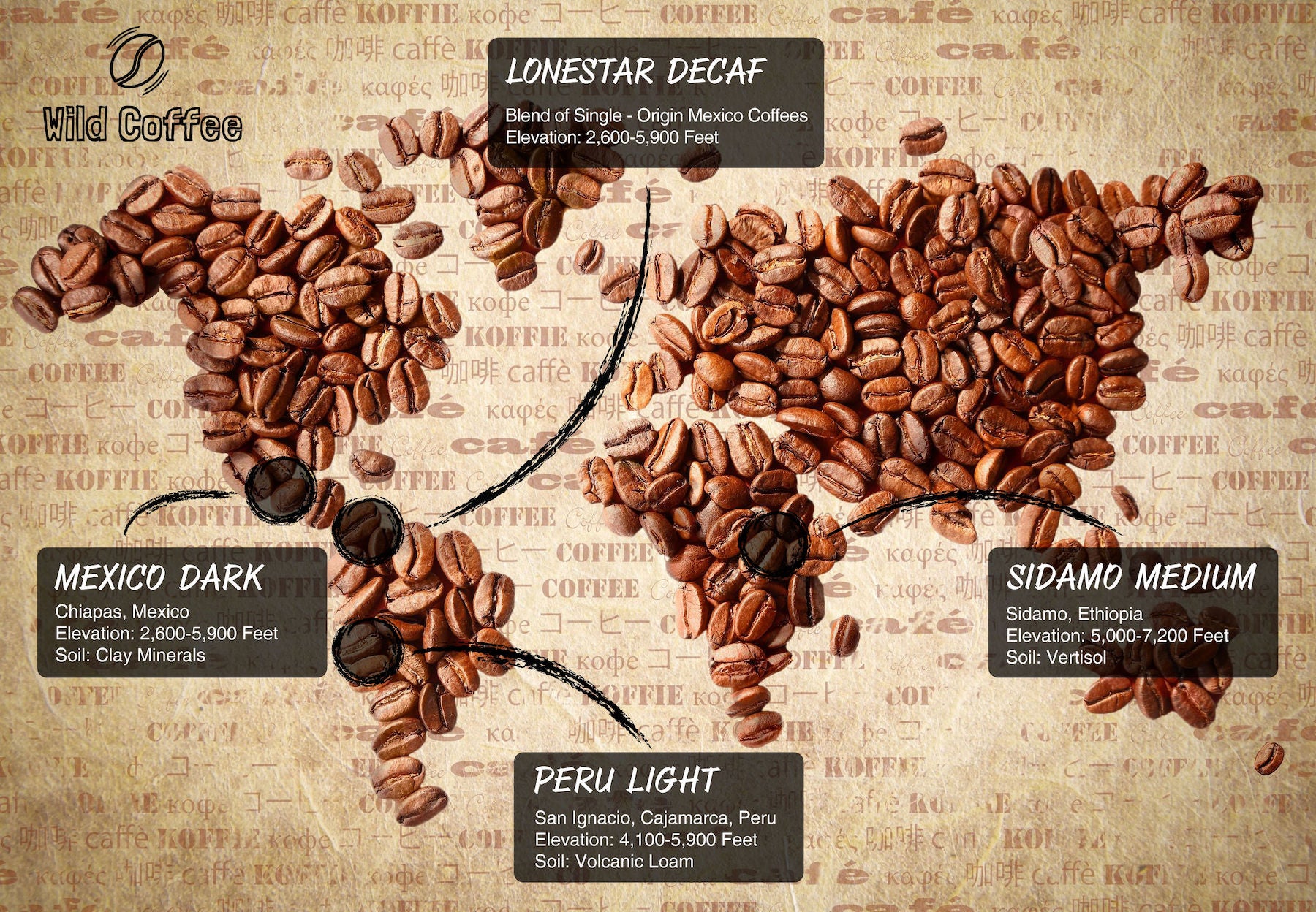Arabica vs Robusta? What's the difference between the two most popular coffee beans

Most people think of caffeine and nothing else when it comes to coffee. However, there are two main types of coffee plants: Arabica and Robusta. Each species has its flavor profile and unique benefits. This article delves into the differences between Arabica and Robusta coffee, exploring their origins, cultivation, flavor profiles, and more.
What is Arabica Coffee?
Arabica coffee beans are the most popular type of coffee, grown primarily in places like Ethiopia, Yemen, and Brazil.
They contain more caffeine than Robusta beans and are more expensive due to the labor-intensive cultivation process. Arabica beans are known for their rich, full-bodied taste and strong but pleasant aroma, making them ideal for a soothing cup of coffee without the jitters.
Growing Conditions
Arabica coffee is grown at high altitudes, between 2,000 and 6,000 feet above sea level, requiring specific temperature ranges (15-24°C) and ample rainfall (3). The delicate nature of Arabica plants makes them more susceptible to pests, diseases, and frost, adding to the cost of production.
Flavor Profile
Arabica beans offer a diverse and nuanced flavor profile, often described as sweet, fruity, and floral with varying acidity (2). This complexity makes Arabica the preferred choice for premium coffees.
What is Robusta Coffee?
The other main variety, Robusta coffee, is much less expensive and is grown in tropical, humid climates like Vietnam and Brazil. It is a heartier plant, harvested earlier than Arabica, and more resistant to pests and diseases.
Growing Conditions
Robusta beans thrive at lower altitudes, between 0 and 2,500 feet above sea level, with a temperature range of 18-36°C and less rainfall than Arabica. Their robust nature makes them easier and less expensive to cultivate.
Flavor Profile
Robusta beans have a more pungent, more bitter taste compared to Arabica. They are often used as fillers in pre-ground coffee to extend the product and reduce costs. Robusta coffee is known for its robust, earthy, nutty flavor and higher caffeine content, which provides a more intense experience.
Differences Between Arabica and Robusta
- Caffeine Content: Arabica coffee beans contain about 1.2-1.5% caffeine, while Robusta beans usually have about 2.2-2.7% caffeine (1).
- Flavor: Arabica beans have a fruity, floral taste, while Robusta beans have a more earthy, nutty flavor.
- Growing Conditions:Arabica beans are cultivated at higher altitudes and require more particular circumstances, whilst Robusta beans are more weather-resistant and grown at lower altitudes.
- Cost: Arabica beans are more expensive due to their labor-intensive cultivation process, while Robusta beans are cheaper (5).
Benefits of Arabica Coffee
- Aroma: Arabica coffee's pungent smell is one of its defining features.
- Taste: Arabica coffee's rich, deep flavor is perfect for various beverages (4).
- Variety: Arabica coffee offers various types that are suitable for different preferences.
Benefits of Robusta Coffee
- Strong Flavor: Robusta's robust and rich flavor makes it ideal for those who prefer strong coffee.
- Pest Resistance: Robusta plants resist many pests, reducing the need for chemical interventions.
- Lower Cost: The lower production cost makes Robusta a budget-friendly option.
- High Caffeine Content: The higher caffeine content in Robusta provides a quick energy boost.
Related Studies:
- This study discovered that drinking moderate amounts of coffee (3-4 cups per day) was connected with a lower risk of dying from any cause, including cardiovascular disease and cancer.
- The study discovered that increasing coffee consumption by at least one cup per day for four years was connected with an 11% decreased chance of acquiring type 2 diabetes.
- The study found that consuming the caffeine equivalent to two eight-ounce cups of black coffee daily helped control involuntary movements in people with Parkinson's disease.
- The study found that consuming two to three cups of coffee daily reduced the risk of chronic liver disease and hepatocellular carcinoma by up to 40%
- The study found that moderate coffee consumption was associated with a lower risk of gallstones.
Conclusion
If you want to pick the best coffee for your needs, it helps to know the distinctions between Arabica and Robusta beans. Arabica beans offer a more refined and diverse taste experience, while Robusta beans provide a robust, strong, and bold flavor. The best way to decide which suits your palate is to sample various blends and single-origin coffees, allowing you to appreciate coffee's rich flavors.
FAQs
What are the two primary types of coffee beans harvested globally?Arabica (Coffea arabica) and Robusta (Coffea canephora).
Where do Arabica beans originate, and what percentage of global production do they account for?Arabica beans originate from the highlands of Ethiopia and account for around 60-70% of global coffee production.
What are the best conditions for Arabica coffee plants?Higher altitudes (2,000-6,000 feet), specific temperature ranges (15-24°C), and ample rainfall.
Where do Robusta beans come from, and what percentage of global production do they account for?Robusta beans are native to the lowlands of Western and Central Africa and account for approximately 30-40% of global coffee production.
What are the ideal growing conditions for Robusta coffee plants?
Lower altitudes (0-2,500 feet), 18-36°C temperature range, and less rainfall.
